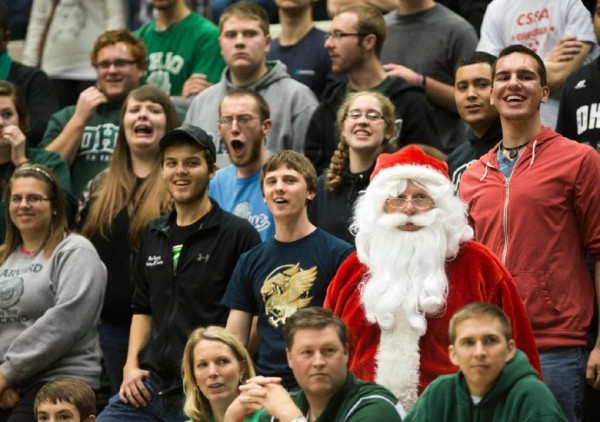Dear Santa: Conference Season is Beginning, Please Bring Help
Posted by Bennet Hayes on December 25th, 2014The man in the red suit is a busy guy right about now, but more than a few college basketball teams should be hoping Santa has time to swing by campus before his work is done. No milk and cookies were left fireside in Lexington, KY, or Durham, NC (reinforcements not needed), and some programs need seek only a stocking stuffer or two (hey there, Virginia and Wisconsin). But most teams have wish lists that stretch far longer. Conference play is here, and the blissful ignorance of the non-conference season? Long gone. In its place arrive true days of reckoning – grinding tests against peers that won’t allow deficiencies to go unpunished any longer. With conference season looming, we take a look at a handful of college basketball teams in desperate need of a gift this Christmas.
Iowa: Last Season’s Shooting Touch
Shoddy defense destroyed the Hawkeye’s promising start a season ago, but things have changed this winter. The defense has been much improved (22nd nationally in defensive efficiency), but a sputtering offense has left Iowa just 9-4 heading into conference play. All eight of the Hawkeye returnees have seen their three-point percentage drop this year (team: 259th nationally in three-point percentage), while only Gabriel Olaseni has improved upon his 2013-14 two-point field goal percentage (team: 232nd nationally in two-point percentage). The widespread nature of the shooting epidemic would seem to indicate some sort of systemic explanation. No Roy Devyn Marble? A lack of comfort with a quicker tempo? A coaching staff that has lost its players? Any or all of these questions could be a dig at the root cause, but even if they are, expecting some reversion to the more efficient levels of 2013-14 is entirely fair. The defense has been there; can Santa bring back the Hawkeyes’ shooting strokes?
Arkansas: Road Victories
For most of Mike Anderson’s tenure at Arkansas, the New Year (and conference play) has brought two things in bunches: home wins, and road losses. The Razorbacks are well positioned to earn their first Tournament appearance under Anderson after a 9-2 start, even if old habits die hard. The Hogs are undefeated on the home hardwood (8-0) and less perfect on the road: Both of the Hogs’ losses (Iowa State and Clemson) have come in enemy arenas. A November win at SMU should not be overlooked, but Arkansas needs to prove they can win games away from Bud Walton Arena in 2015. A depleted SEC should play the role of enabler.











































